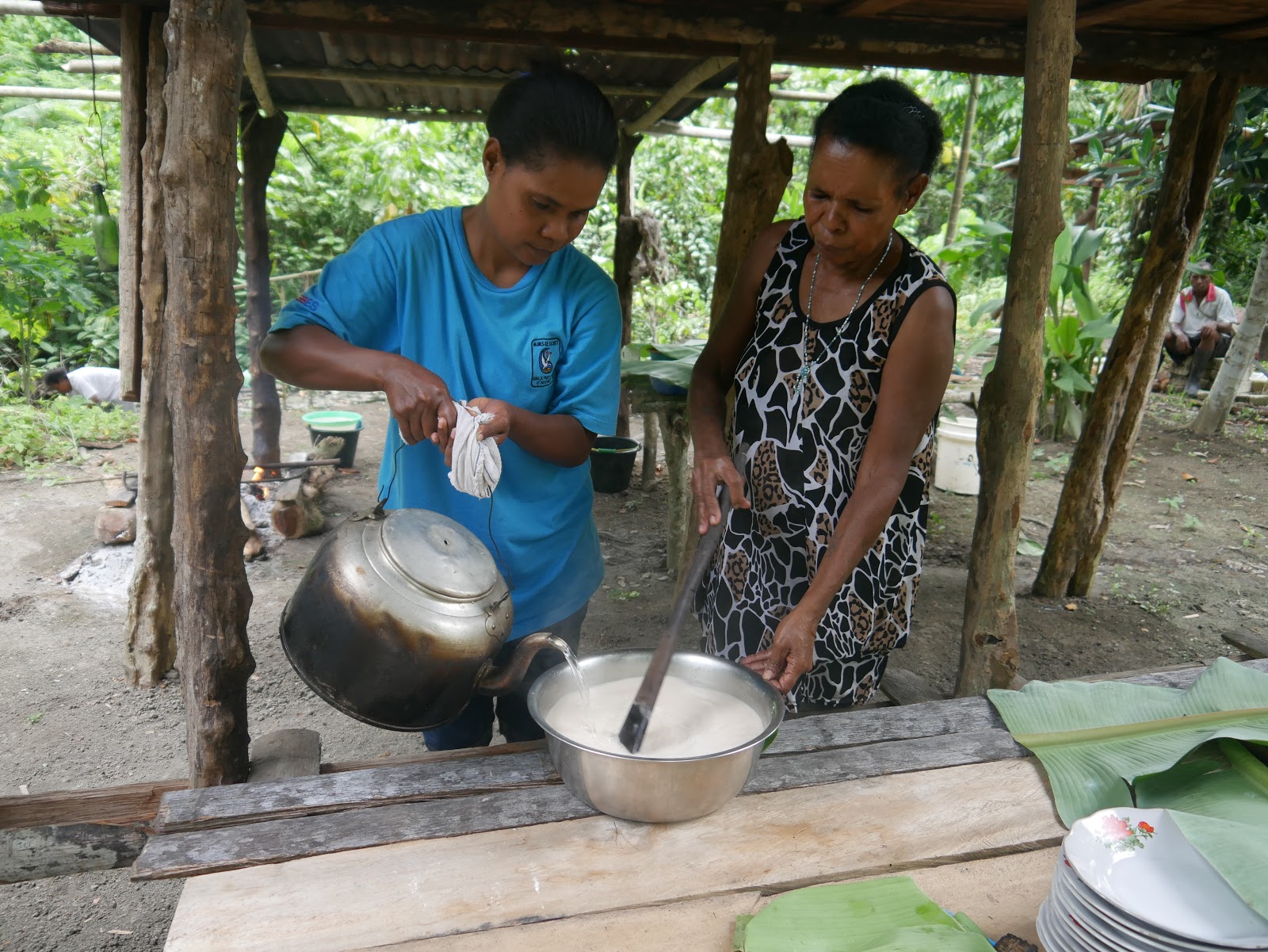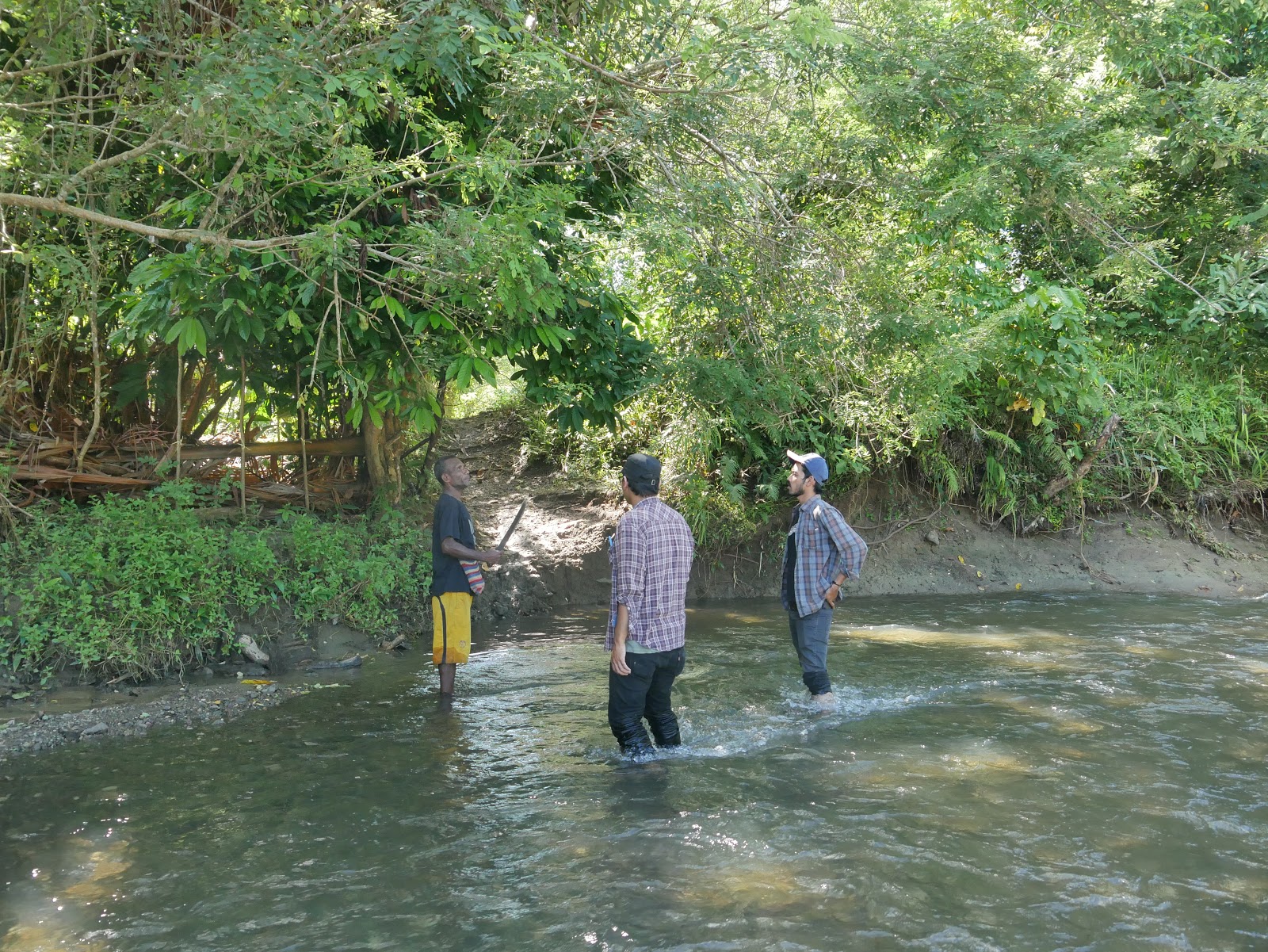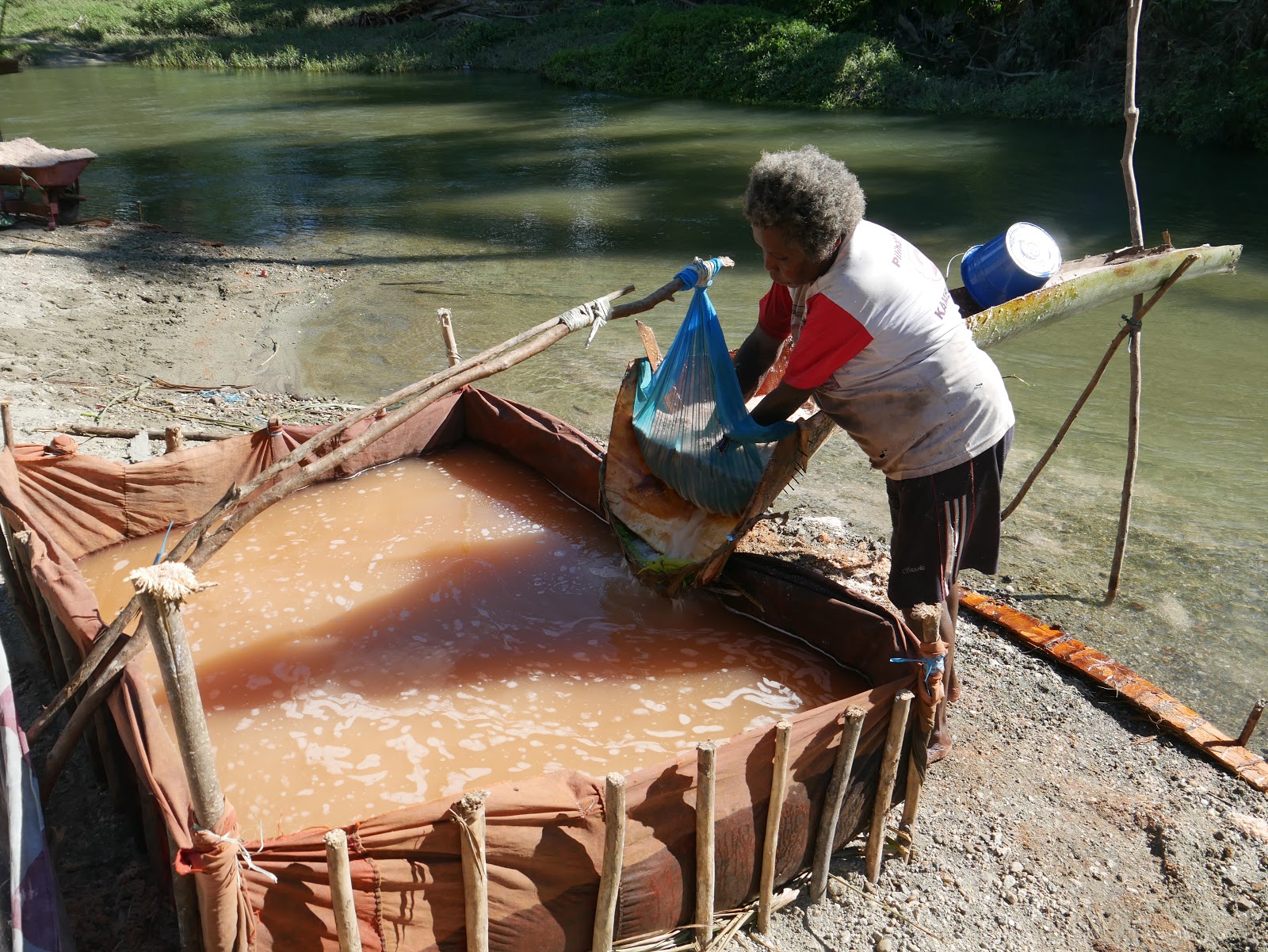
“How far into the forest are your sago plants?”
“Not too far, about an hour walk from here.”
With that, our team unknowingly agreed to cross three small rivers and muddy trails through a forest near Maribu Village, Jayapura district, Papua, cautious of malaria-carrying mosquitos. It was our fourth day in the field.
Sago (Metroxylon sagu rottb) — the staple food of Papuans — have been cultivated and consumed for decades in the largest province in Indonesia, yet the production of sago itself is not common knowledge to most Indonesians, including myself. The starch is extracted from a sago tree. Commonly found in swampy areas deep in the forest, the palm-like trees can grow up to 15 meters tall with a diameter of 10 to 15 meters. To get sago from farm to kitchen table is a laborious process, starting with opening the bark, to grinding and finally, extracting the starch. Depending on the size of the sago tree, farmers usually ask for 3-5 days worth of work help from their extended family. Extracted sago starch is sold to buyers at a market rate of 200,000 rupiah per 15 kg.
Despite sago’s indispensable presence in the Papuan household, Papua is surprisingly the second largest producer of sago in Indonesia with about 30,000 tonnes produced in 2016 — far behind Riau province which leads with an output of 378,000 tonnes in the same period. This highlights an opportunity for farmers in Papua to increase their competitiveness.
Preparing papeda, the common form of sago consumed in Papua
Not Your Typical Cash Crop
Based on our observations, farmers in Papua are narrowly split into two categories: indigenous Papuan farmers and transmigrant farmers, who come from Java, Sulawesi or other islands in Indonesia as part of the government’s transmigration program. While most live together in cross-cultural communities, we saw that the two groups show different crop choices and farming practices. The difference is stark for sago farming.
Sago is mostly – if not entirely – cultivated by local Papuan farmers whereas other plantation crops such as cacao are grown by both local and transmigrant farmers. The majority of sago farmers only work to harvest and process sago when a consumption need arises in their household. Only after meeting the sago needs of their own household will a sago farmer sell the remaining processed sago to a nearby market. In that sense, sago is not seen as a typical cash crop.
Challenges in Sago Farming
One of the challenges for sago farmers is transporting the produce. More often than not, farmer-owned sago plants are located deep inside forests, near rivers or trails with muddy terrains. It can take more than an hour to reach from the village, so farmers typically set up a hut to stay during sago harvesting and processing. Rain can add to the challenge for sago farmers since it makes transporting the produce with wheelbarrows even more difficult.
The lack of market access is another barrier for sago farmers. Based on our observations, most farmers in Papua only sell sago starch – a semi-processed form of sago – despite the fact that the technology and knowledge to further process sago are readily available elsewhere in the nation.
Sago plantations are usually located a distance away from settlement areas
Sago processing is usually done near where the sago tree is chopped-off
Mapping Unmet Needs in Papua and Kalimantan
Building on Kopernik’s Unmet Needs report in 2016, our team is currently analyzing stories and data from our trip to the provinces of West Kalimantan, Papua, and West Papua in February to identify opportunities and the possible solutions.
The snapshot of sago farmers and their challenges is just an early peek into the insights that we have gained during the research. More comprehensive findings for sago and nine other crops across these three provinces will be disseminated in our publication this coming June. Stay tuned!
Kopernik's Unmet Needs Report 2018 is published! For more insights on the unmet needs of smallholders farmers in Papua, West Papua, and West Kalimantan, read the full report here.
Kopernik is proud to partner with the David and Lucile Packard Foundation and the Ford Foundation, which are members of the Climate and Land Use Alliance (CLUA). CLUA is a collaborative initiative aiming to realize the potential of forested and agricultural landscapes to mitigate climate change, benefit people, and protect the environment.





